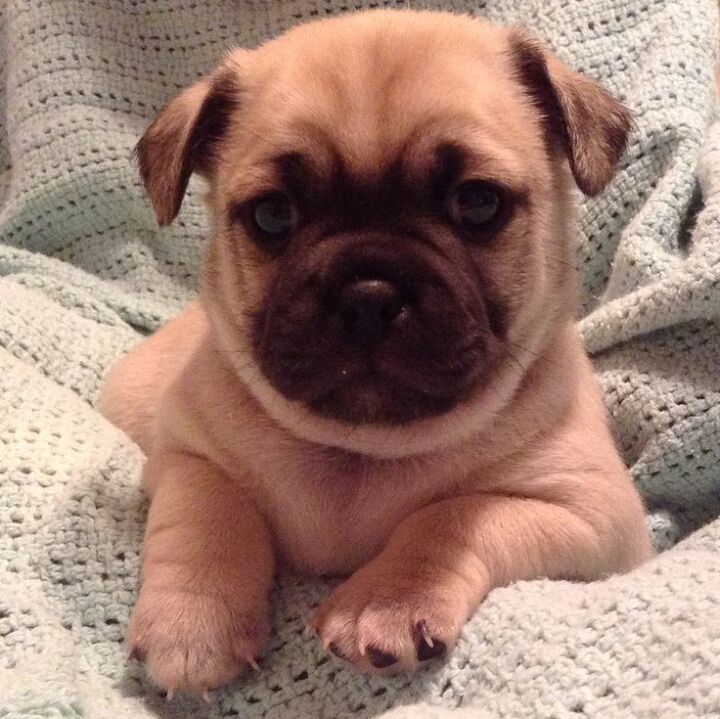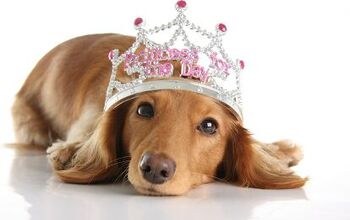Puggat


About Puggat
A crossbreed dog, the Puggat has the energy and body of the Rat Terrier, but the short nose and affectionate, trickster side of the Pug. They enjoy going for long walks around the neighborhood, as well as cuddling up on your lap while you watch TV.
Like most smaller breeds, the Puggat will notify you of a knock at the door with a series of short, sharp barks. Once properly introduced, your Pug and Rat Terrier mix will have made a new friend. After a few minutes of having them in the home, this pup will hop right onto their lap and lick them from head-to-toe in exchange for plenty of belly rubs and head pats.
The Puggat has the energy of the Rat Terrier and the clownish side of the Pug.
The act of mating two different purebred dogs to make a new “designer” breed has been popular for about two decades. While we aren’t sure who created the Puggat breed or why, we do know how the Pug and Rat Terrier came to be.
Pugs were originally bred to be the lap dog for Chinese Emperors, which explains their absolute adoration when it comes to laps. The Dutch India Company imported Pugs to the west as early as the 16th century, which gives Pugs a long history in Europe as well (they became popular in France, in fact). They eventually made their way to the hearts (and laps) of Americans as well!
The Rat Terrier has its origins in England where it was used farmers’ right-hand dog. True to their name, this dog would go after rats that infested farms and also chased rodents that threatened crops. When the English immigrated to the United States around 1890, the Rat Terrier came with them. Between 1910-1930, this dog was one of the most common American farm dogs.
The Puggat is a crossbreed dog with Pug and Rat Terrier parents.
To keep this dog healthy and full of energy, a total of 1.5 to 2 cups of high-quality kibble is recommended, spread out between 2 to 3 meals per day. Kibble also helps keep your Puggat’s teeth clean and strong.
Puggats make wonderful companions because of their easygoing personalities and eagerness to please.
Early training and socialization is key to a well-rounded pooch who obeys commands. Training should be limited to 30 minutes a day (else the Puggat may get tired/bored) and good behavior needs to be rewarded with a piece of kibble or a treat at the end of the training session. Should your Puggat disobey commands at first, remember not to sound impatient or angry, as dogs easily pick up on emotions and may be less responsive in return. Keep your voice steady, even and stay positive even when your dog seems to be a bit stubborn at first – repetition is key!
The Puggat is a small to medium sized dog that can weigh anywhere from 10 to 25 lbs.
The Puggat gets most of its cuddly, lap-dog features from its Pug side, so if you’re a huge lover of dogs who will sleep at your bedside and hang out when you come home from a long day at work, the Puggat is definitely the dog for you. However, the Puggat has the best of both worlds: they are lap dogs, but they also have all the energy and playfulness of the Rat Terrier. This means daily walks around the neighborhood or dog park is a must (weather permitting, of course). Otherwise, lots of indoor playtime will no doubt tucker this small guy right out.
Their playful, affectionate nature makes them excellent dogs for growing families who would benefit from having a four-legged best friend. They are small and low-maintenance, making them an ideal choice for a senior, retiree or veteran so long as they can take care of regular doggy duties (such as walking, cleaning indoor puppy pads, bathing, etc). They make wonderful companions because of their easygoing personalities and eagerness to please. While they may be wary of strangers at first, they will eventually warm up to them and consider them a friend rather than foe.
Puggats may inherit a health problem from either of its parent breeds. The most concerning health problems for Pugs is brachycephalic airway obstruction syndrome (BAOS), which impairs their breathing in many ways. Pugs are also prone to eye problems such as brachycephalic ocular syndrome because of their short snouts. They don’t handle heat well, making them susceptible to problems such as heat stroke. Finally, they are also at-risk for having high blood pressure, fainting/collapsing (due to breathing difficulties) and hemivertebrea (spine deformities).
Rat Terriers, on the other hand, are relatively healthy dogs and don’t have too much to worry about in the health department. However, they often have allergies as well as misaligned jaws that need to be corrected by a veterinarian should it not resolve itself when they are pups. Rat Terriers are also susceptible to patellar luxation as well as demodectic mange (sometimes called demodicosis).
The Puggat is expected to live anywhere from 12-14 years.
The Puggat is an active pooch who loves to be outside. Because of his small size, he does do well in apartments so long as he is taken outside for at least 30 minutes per day. Be wary of the temperatures, as Puggats do not do well when the temperature is too cold. While they do not have as many nasal problems as their Pug parent, keep a close eye on them when the temperatures are high as well, as they can overheat.
The Puggat’s playful, affectionate nature makes them excellent dogs for growing families.
The Puggat is not recognized by the American Kennel Club, as it is considered to be a hybrid breed. However, this breed is recognized by the American Canine Hybrid Club (ACHC), the Designer Dogs Kennel Club (DDKC), Dog Registry of America, Inc. (DRA) and the International Designer Canine Registry (IDCR).
They may be small and their fur may be short, but Puggats shed much more than you may think! Be sure to have a lint roller handy whenever you step out of the house, as your Puggat’s fur will no doubt get stuck to all your clothes. Like most dogs, Puggats will tend to shed more in the spring than any other season of the year. To keep their shedding to a minimum, they should be brushed once a week.
As pups, these dogs can be deceivingly shy at first, especially the first few days or weeks away from their mother. However, after a few days with their new family, his playful, energetic personality starts to shine and you’ll have a blast with your Puggat. As with all pups, they should be supervised by an adult when playing with children, as children may hurt dogs (especially smaller ones) by pulling their ears, kicking, etc.
Photo credit: hjd15/Flickr

More by Diana Faria

























